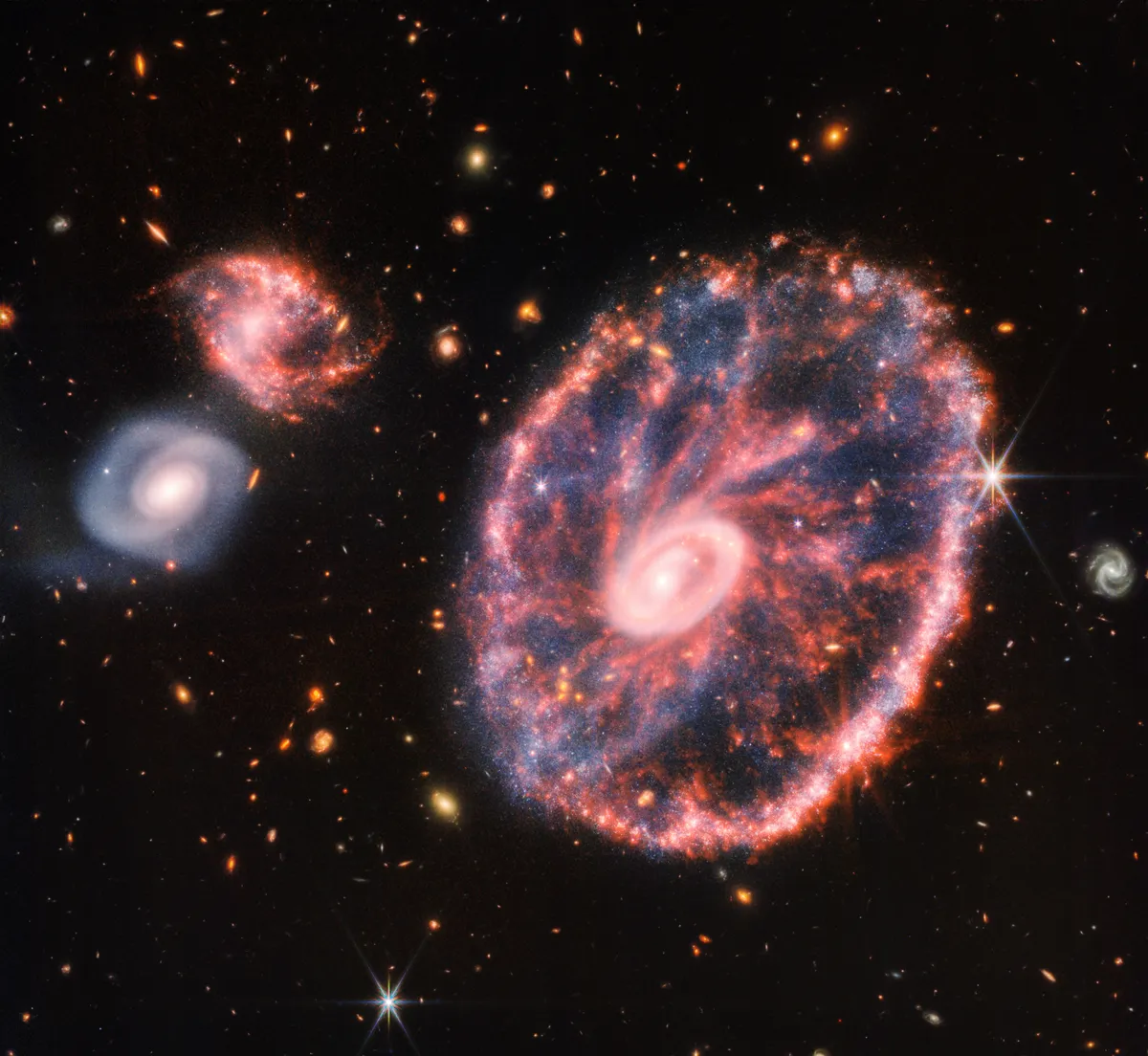Images captured by the high-precision instruments on the James Webb Space Telescope (JWST) have given astronomers a close-up view of the Cartwheel Galaxy – a bizarre ring galaxy that formed following a collision between a large spiral galaxy and a smaller neighbouring galaxy.
The images were captured by the telescope’s Near-Infrared Camera (NIRCam) and Mid-Infrared Instrument (MIRI) and are sharp enough to show the individual stars scattered throughout the galaxy’s spectacular form.
The blue dots seen in the images are individual stars, or areas of star formation, while the red dots show areas rich in hydrocarbons.
The Cartwheel Galaxy was previously captured by the Hubble Space Telescope, but the JWST’s capability to detect infrared light has now uncovered new insights about its structure and life cycle.
The galaxy is located about 500 million light-years from Earth in the Sculptor constellation. Its wheel-like appearance is thought to be the result of an highly energetic collision between a large spiral galaxy and a smaller galaxy that is not visible in this image.

It consists of two clearly visible rings – a bright inner ring and a more colourful outer ring. Both rings are expanding outwards from the site of the collision, much like the ripples created by throwing a stone into a pond. At its centre is a black hole.
The bright core is crammed with raging clouds of hot dust and is littered with young star clusters. The outer ring, which astronomers say has been expanding for about 440million years, triggers the formation of new stars as is collides with the surrounding pockets of gas.
The researchers say that the Cartwheel Galaxy is currently in a state of great change and that further study of this mysterious cosmic object will provide insight into its formation, lifecycle and future.
Read more about the JWST: